#native species of Ontario
Explore tagged Tumblr posts
Text


Plathemis lydia, known as the common whitetail or long-tailed skimmer. Pictured is an adult female.
Eastern Ontario, Canada | June 16th, 2024
#dragonfly#insects#photography#species identification#nature photography#nature#canada#canon photography#naturecore#photographers on tumblr#original photographers#ontario#wildlife#wildlife photography#native species
28 notes
·
View notes
Text
Virginia Bluebells (Mertensia virginica)
Blue flowers are relatively rare. Most incline to violet or else are quite small. But Virginia bluebells are a striking exception. All my photos from my garden, unedited.
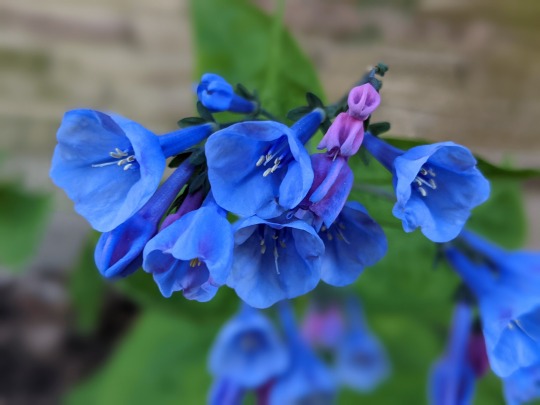

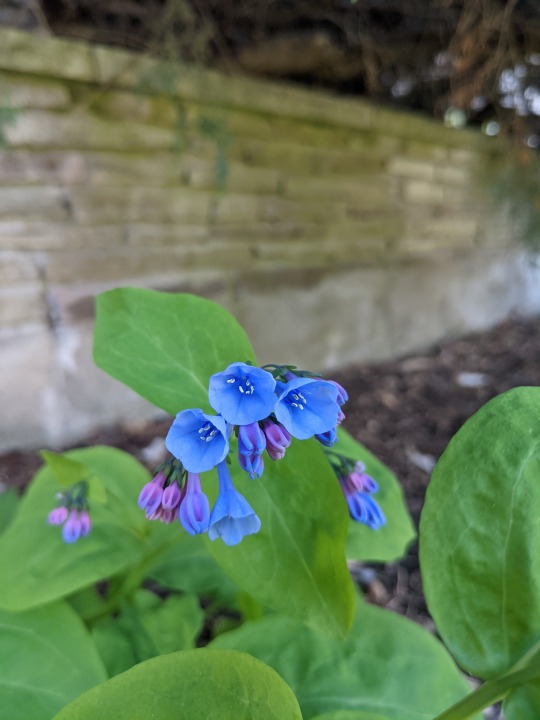
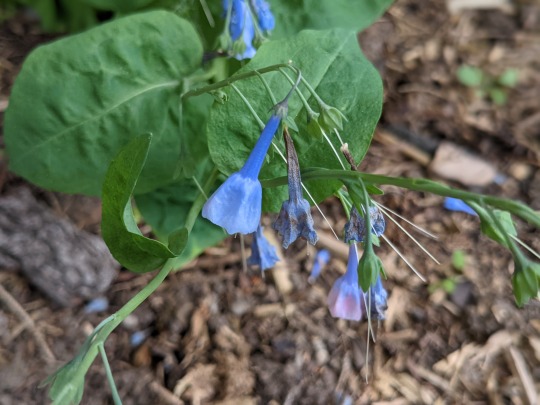
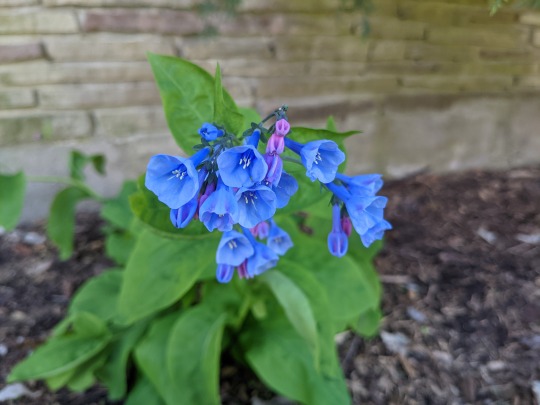

I'm not kidding. They really are that blue naturally. They bloom in May. Then they slowly decline and the entire plants are gone above soil by the summer. Only to reappear the following spring! The shoots and flower buds are edible. You don't want to take too much, though. As spring ephemerals, they need the energy they make with their leaves during their short growing period. The short bloom period is also why I don't have more photos of them. They don't even bloom every year.
#photography#my photos#blackswallowtailbutterfly#Virginia bluebells#Mertensia virginica#flowers#blue flowers#wildflowers#gardening#native species#North American native plants#edible wild plants#my garden#native plants of Ontario and the northeastern USA#spring ephemerals
23 notes
·
View notes
Text



Purple wildflowers 1) Himalayan Balsam (invasive) 2) Wild Bergamot (native) 3) Wild teasel (invasive)
#flowers#wildflowers#canon canada#eosr6#hiking#himalayan balsam#wild bergamot#teasel#invasive species#native species#canon photography#original photography#ontario#bloom
2 notes
·
View notes
Text
"In 2021, scientists in Guelph, Ontario set out to accomplish something that had never been done before: open a lab specifically designed for raising bumble bees in captivity.
Now, three years later, the scientists at the Bumble Bee Conservation Lab are celebrating a huge milestone. Over the course of 2024, they successfully pulled off what was once deemed impossible and raised a generation of yellow-banded bumble bees.
The Bumble Bee Conservation Lab, which operates under the nonprofit Wildlife Preservation Canada, is the culmination of a decade-long mission to save the bee species, which is listed as endangered under the Xerces Society for Invertebrate Conservation...
Although the efforts have been in motion for over a decade, the lab itself is a recent development that has rapidly accelerated conservation efforts.
For bee scientists, the urgency was necessary.
“We could see the major declines happening rapidly in Canada’s native bumble bees and knew we had to act, not just talk about the problem, but do something practical and immediate,” Woolaver said.
Yellow-banded bumble bees, which live in southern Canada and across a huge swatch of the United States, were once a common species.
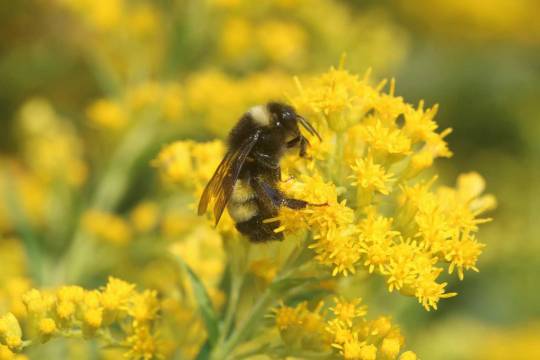
However, like many other bee species, their populations declined sharply in the mid-1990s from a litany of threats, including pathogens, pesticides, and dramatic habitat loss.
Since the turn of the century, scientists have plunged in to give bees a helping hand. But it was only in the last decade that Woolaver and his team “identified a major gap” in bumble bee conservation and set out to solve it.
“No one knew how to breed threatened species in captivity,” he explained. “This is critically important if assurance populations are needed to keep a species from going extinct and to assist with future reintroductions.”
To start their experiment, scientists hand-selected wild queen bees throughout Ontario and brought them to the temperature-controlled lab, where they were “treated like queens” and fed tiny balls of nectar and pollen.
Then, with the help of Ontario’s African Lion Safari theme park, the queens were brought out to small, outdoor enclosures and paired with other bees with the hope that mating would occur.
For some pairs, they had to play around with different environments to “set the mood,” swapping out spacious flight cages for cozier colony boxes.
And it worked.
“The two biggest success stories of 2024 were that we successfully bred our focal species, yellow-banded bumble bees, through their entire lifecycle for the first time,” Woolaver said.
“[And] the first successful overwintering of yellow-banded bumble bees last winter allowed us to establish our first lab generation, doubling our mating successes and significantly increasing the number of young queens for overwintering to wake early spring and start their own colonies for future generations and future reintroductions.”
Although the first-of-its-kind experiment required careful planning, consideration, resources, and a decade of research, Woolaver hopes that their efforts inspire others to help bees in backyards across North America.
“Be aware that our native bumble bees really are in serious decline,” Woolaver noted, “so when cottagers see bumble bees pollinating plants in their gardens, they really are seeing something special.”"
-via GoodGoodGood, December 9, 2024
#bees#insect#save the bees#xerces society#biodiversity#conservation#endangered species#wildlife conservation#canada#north america#climate action#climate news#good news#hope
5K notes
·
View notes
Text
Dandelion News - November 22-28
Like these weekly compilations? Tip me at $kaybarr1735 or check out my Dandelion Doodles!
1. Los Angeles becomes a sanctuary city for LGBTQ+ youth and immigrants as officials reject Project 2025

“The Los Angeles City Council voted unanimously Tuesday to pass the “sanctuary city” ordinance, shielding queer youth who travel to the city to receive gender-affirming care from prosecution, as well as preventing city resources from being used in immigration enforcement[….]”
2. Huge deforested areas in the tropics could regenerate naturally, study finds

“Cleared or degraded tropical forests around the world covering a combined area larger than Saudi Arabia could regrow on its own, according to new research published Oct. 30 in the journal Nature. [… T]he permanence of regrown forests is critically important to the benefits it can provide to biodiversity and the climate.”
3. Minnesota tribe could soon get a solar-powered resilience hub

“A pair of developers are working to build a microgrid at an elementary school and community center on the White Earth Reservation in northern Minnesota [… which would] provide about 12 hours worth of backup power for residents to be able to charge cell phones, power medical equipment, or stay warm in the event of a power outage.”
4. An exchange between Indonesia and Tanzania supports food security and ocean health
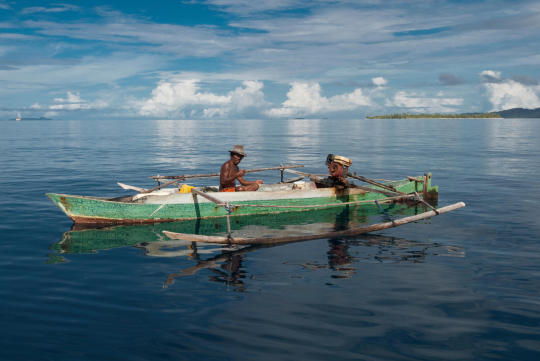
“Around the world, WWF helps manage […] both traditional sustainability-oriented management and science-based practices. This combination supports long-term food security and biodiversity goals. […] Local ownership and management are […] key to achieving stable fisheries and social and economic benefits.”
5. Spiky blue devils and chocolate lilies: Victorian grassland bursts with wildflowers after ecological ‘reset’

“About 70 native plant species could be found within the site, including […] four endangered species of orchid. […] Careful management, including an ecological burn in May and weed control measures to reduce pasture grasses, laid the groundwork for wildflowers to thrive.”
6. Vast forests, wetlands and lakes conserved [in Ontario]

“A vast 970-hectare area featuring thriving forests, wetlands and crystal-clear lakes northeast of Sault Ste. Marie is now protected[….] The intact forests, lakes, wetlands and shorelines support high biodiversity and are home to many threatened species[….]”
7. A New Era of Compassion: How Suncoast Humane Society is Changing Animal Welfare for Good
“Our campus includes outdoor play areas, trails, and even a small swimming pool to encourage animals to stay active, explore, and simply be themselves.”
8. Building climate resilient cocoa farming in West Africa
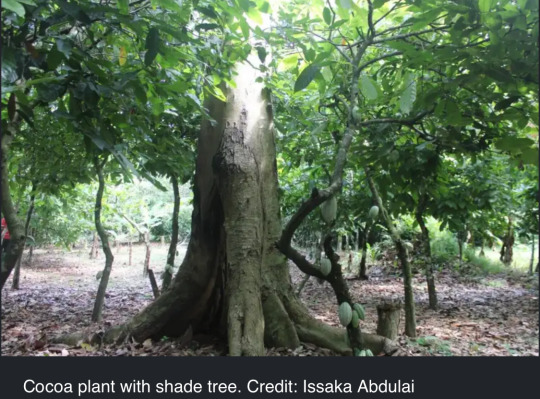
“[… A] promising new approach to improve climate resilience in cocoa agroforestry across West Africa […] focuses on the critical role of leaf "phenology"—the seasonal changes in leaf cycles—in trees providing shade in managing climate impacts. [… S]hade trees that lose their leaves entirely during the dry season proved especially beneficial in maintaining soil moisture[….]”
9. New Zealanders save more than 30 stranded whales by lifting them on sheets
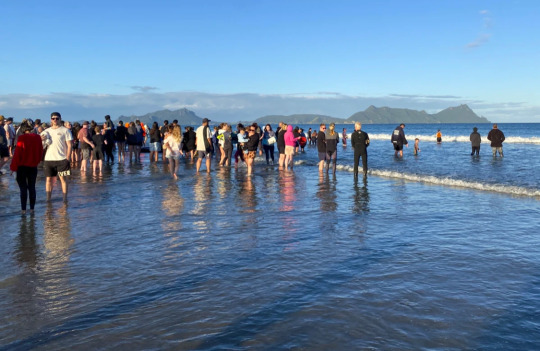
“[The Department of Conservation] praised as “incredible” the efforts made by hundreds of people to help save the foundering pod. “It’s amazing to witness the genuine care and compassion people have shown toward these magnificent animals[….]””
10. 'A really sobering moment:' English zoo fights extinction of freshwater Boxer pupfish

“Whipsnade Zoo aquarists were recently told by conservation partners that that the world's last remaining Boxer pupfish was in their care, prompting the zoo to carry out the immediate transport of all the "precious" Boxer pupfish eggs to another local conservation and education charity in the name of species preservation.”
November 15-21 news here | (all credit for images and written material can be found at the source linked; I don’t claim credit for anything but curating.)
#hopepunk#good news#los angeles#us politics#lgbt+#immigrants#deforestation#nature#minnesota#native american#indigenous#electricity#solar panels#solar energy#solar power#ocean#fishing#food insecurity#wildflowers#native wildflowers#native plants#conservation#canada#animal shelters#humane society#agroforestry#new zealand#whale#fish#endangered
123 notes
·
View notes
Text
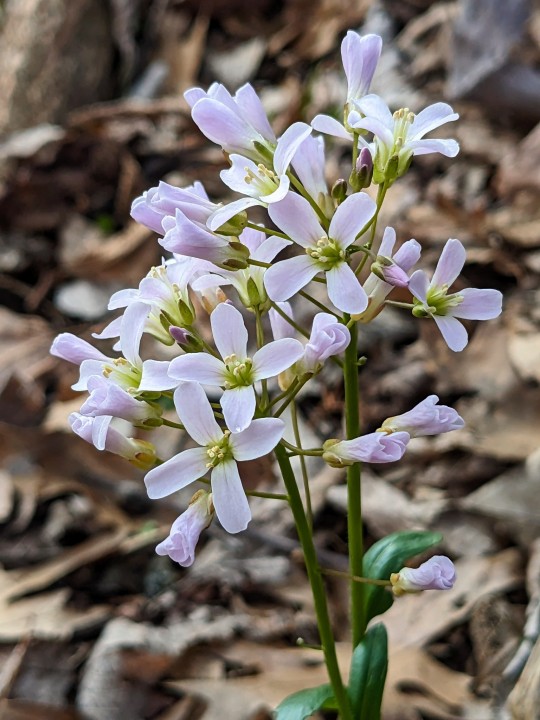

Purple Cress
Cardamine douglassii
Also known as Limestone Cress, this species in the mustard family features clusters of light purple flowers in early spring and can be found in wet and swampy forests with calcium carbonate rich soils. It's native to parts of the eastern United States and southern Ontario, Canada.
The plants I photographed are part of an isolated population remaining in a tiny bottomland forest remnant in St. Charles County, Missouri. Unfortunately, the rest of the forest has been lost due to suburban sprawl and what little of it remains has many invasive species, including winter creeper, callery pear, and japanese honeysuckle trying to encroach from surrounding developments and outcompete native plants like this one.
March 12th & 13th, 2024
St. Charles County, Missouri, USA
Olivia R. Myers
@oliviarosaline
#botany#cardamine douglassii#cardamine#purple cress#bittercress#brassicaceae#nature#naturecore#forest#fairycore#woods#missouri#native plants#native flowers#forests#hiking missouri#suburban sprawl#urban sprawl#ecology#plants#flowers#wildflowers#purple flowers#native plants of america#forest floor#bottomland woods#bottomland forests#nature photography#flower photography#spring
37 notes
·
View notes
Text
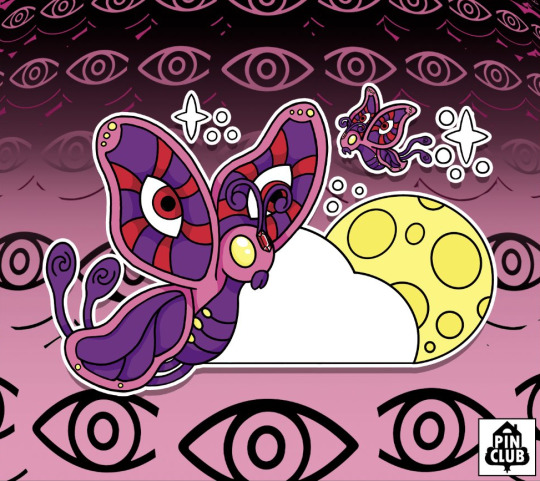
The Wingwak [Algonquin mythology; Native American mythology]
Sleep-inducing creatures and spirits are somewhat common in myths and tales from around the world, presumably having arisen independently as ways to explain peoples’ need for sleep. In the folklore of the Native American Algonquin people – who live in Canada – this creature takes the form of the Wingwak (alternatively ‘Wingoc’), a small insect-like supernatural being.
Though the Wingwak is a spirit of sleep, it takes the form of a butterfly (though I have also seen them described as flies). Usually they swarm someone in groups of five in order to put that person to sleep.
There is an Algonquin legend about a celestial being who, being aloof and not paying attention, fell through a hole in the heavens and fell down to Earth. Though he was not hurt by the impact, the being was surprised to find that mortal humans sleep. He eventually discovered a man who slept significantly more than the other humans, and around whose head there was a swarm of butterflies. He crafted a bow with arrows and took aim at the insects. His aim was far beyond that of mortals, so he managed to hit some of the insects with an arrow and chased the others away. Thus, the being from the heavens managed to wake the man and proceeded to share his knowledge with the humans. He prophesized that one day, a race of bearded creatures would arrive in this world. When that happens, the people would die off. And later, the arrival of the women of this bearded species will signal ruin for the people. I believe this last part might be a reference to a different story that I did not manage to find.
The Wingwak is also mentioned in a bunch of proverbs: the saying ‘wingwak ondjita manek’ (“there are many wingwak”) means that everyone is currently asleep. ‘Ni nisigok wingwak’ (“[may] the wingwak kill me’) is said when one is very tired.
Sources: Chamberlain, A. F., 1900, Some Items of Algonkian Folk-Lore, The Journal of American Folklore, 13(51): pp. 271-277. University of Western Ontario, 1990, Algonquian and Iroquoian Linguistics, Volumes 15-20, page 35. Cuoq, J. A., 1886, Lexique de la langue algonquine, J Chapleau & Fils, Oxford University, 446 pp. (image source: Pinclub Teaser for the Metazoo Cryptid trading card game, illustration by Siobhan Daly)
This is the third or fourth time I looked up images of a very obscure folktale and found artwork from Metazoo cards. Maybe I should check that out. I really suck at trading card games, though.
44 notes
·
View notes
Text
Blog 1: Connected to Nature
Hello, ENVS*3000 friends! I'm Maia, and I am in my third year of Biological Sciences. Welcome to my first blog :)
I would describe my current connection with nature as a profound yet carefree essence. I come from the city, more precisely, North Toronto; I found myself yearning for nature's embrace from a young age, perhaps triggered by its scarcity in my urban surroundings. Recognizing my affinity, my dad, a nature enthusiast, actively fueled my passion through camping adventures, hiking escapades, and shared moments immersed in captivating David Attenborough documentaries. In the midst of a large Italian family, where the majority remained indifferent to the natural world, I stood out as the quiet one, the nature lover, aspiring Dr.-to-be. Amidst this, my dad became my reliable support, sharing the same passion for the great outdoors. His passion for wildlife and landscape photography became a shared pursuit, complete with my very own camera.
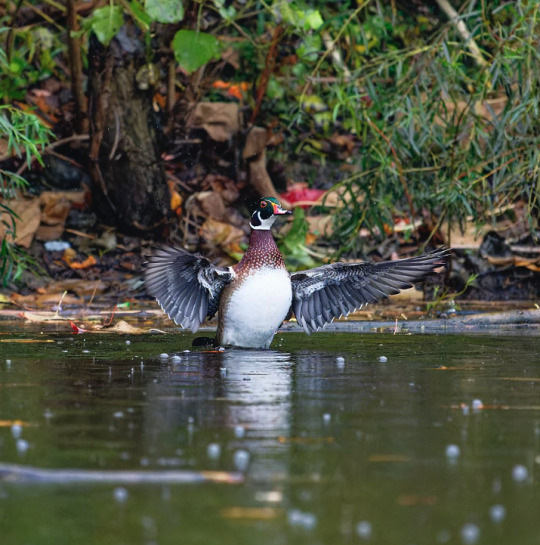
Photo of a male wood duck shot by Dino Melissa
Despite a bustling upbringing as a competitive dancer for 17 years—which is not exactly an outdoor sport—I surrounded myself with nature books, my dad's photographs, and nature documentaries. Unfortunately, while balancing a hectic city life, the opportunities for my dad and I’s outdoor adventures diminished over the years. However, as I am maturing and expanding my knowledge, I continuously discovered new ways to appreciate nature and its interconnected web of life - not mosquitoes though…
In my quest to inspire others to view nature through a similar lens as I do, I spent the past summer at a wildlife hospital, manning the front desk. Handling cases ranging from fallen hawks to orphaned baby raccoons to pigeons with string around their feet, I strived to educate callers about wildlife while debunking misconceptions. Some common ones are that pigeons are dirty and will give us diseases, and snakes are evil - spoiler alert, both are very wrong! While not everyone appreciated or grasped the educational aspect—some mistaking us for pest removal—many left with a newfound understanding of Ontario's wildlife. Small changes, after all, contribute to a broader impact of protecting our native species. This job expanded my knowledge - which I still try to share with anyone who will listen - and played a pivotal role in further evolving my relationship with nature.
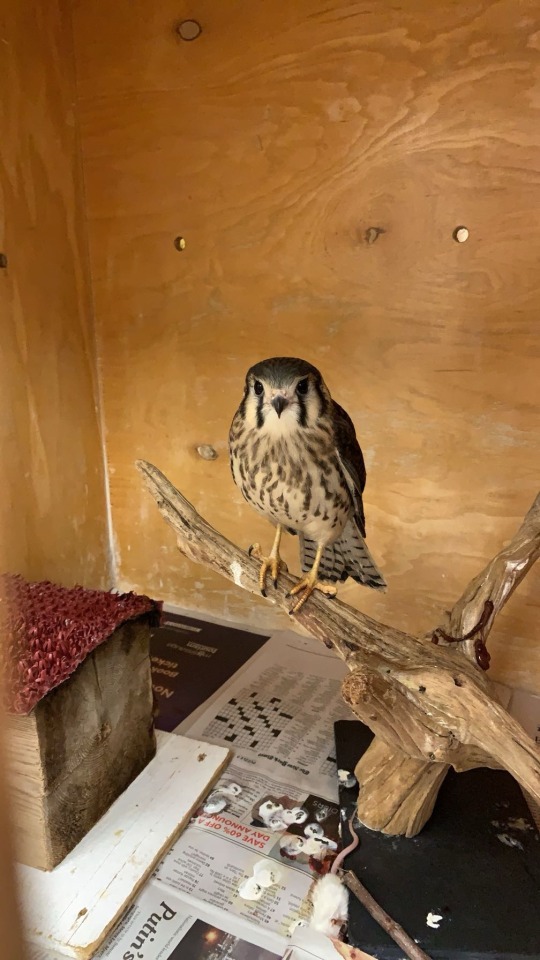
Picture of an American Kestrel
One place that has bestowed upon me a profound sense of place is my cottage—a haven of tranquillity like no other. Nestled on about an acre of land, backing onto a forest, it teems with diverse wildlife such as deer, coyotes, foxes, turkeys, grouse, and a plethora of native plants. Whether quietly observing the tree line or engaging in summer activities like kayaking and hiking, the ambient sounds of water, wind, and nature's symphony create a genuine sense of place; whenever I am there I feel as if I belong there. It's here that I yearn to escape city living permanently, trading it for the allure of a rural plot of land to live off of sustainably.
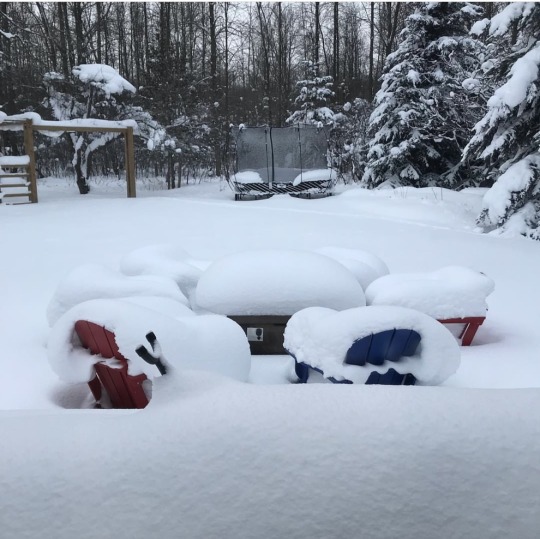
Picture of the backyard during the winter
The dream of owning a small farm and caring for animals has been a lifelong goal of mine. The charm of sustainable living intertwines with my passion for nature; here is where I hope to coexist in harmony. Through responsible practices and a deep connection with nature, I aim to contribute to the preservation of the natural world, all while feeling a permanent sense of place like no other.
21 notes
·
View notes
Text
would anyone be interested in doing a free seed exchange? i have a decent amount of species native to the northeast region of North America, and non-native edible species that grow in Ontario.
#if anyone is interested i can type up a list of all the seeds i have#sometime later this week or next week#if anyone has american pokeweed seeds and is willing to send them pls message me! someone pulled out the one i was gonna collect seeds from#my gardening
4 notes
·
View notes
Text
Scientists use a refrain to sum up in the impact of earthworms [...]: “Good in your garden, bad in the forest.” It’s a quip that can sometimes come as a surprise to people used to thinking of earthworms as symptoms of healthy soil.
In Canada’s northern forests, there’s increasing evidence of a worm problem.
According to research from 2013, tiny soil invertebrates, like mites and springtails, decrease in abundance by more than 50 percent when earthworms are present. These minute creatures play an important role in the decomposition and nutrient-cycling of plants, and their decline can likely be attributed to the rapid way earthworms devour leaf litter. [...] And earthworms, it seems, are spreading everywhere. Research on their presence in northern US forests, where invasions are more advanced, suggests that they could have cascading effects including everything from more severe drought to greater human allergies. [...]
[N]early all native species of earthworms in Canada were wiped out over 12,000 years ago, during the last period of glaciation. Earthworms, we now know, have been present in southern Canada for only a few short centuries, the first having hitched a ride with colonizing Europeans [...].
---
Lumbricus terrestris -- the common earthworms people find in their gardens, which are often called dew worms or Canadian nightcrawlers in fishing circles -- are one of the worm species that were transported from Europe and have settled into their new home so successfully that they’ve emerged as a valuable commodity. According to Steckley’s later research on the subject, demand for these worms as fishing bait exploded as recreational fishing became popular in the wake of the Second World War. But earthworms defy attempts at commercial cultivation and have to be plucked from the wild.
In the 1980s, southwestern Ontario, with its rich soil, abundant volume of introduced nightcrawlers, and steady supply of immigrant labour, quickly eclipsed the other worm-producing regions of North America. By the time Steckley drove past the worm pickers,
Ontario had become the epicentre of global nightcrawler production, with an estimated 500 million to 700 million worms picked and shipped across North America every year.
---
Steckley, who is now a doctoral candidate at the University of Toronto researching Ontario’s bait-worm industry, says that he was actually right about his initial impression: there were bags of money in that farmer’s field, at least in the figurative sense. Worm pickers usually make around $30 per 1,000 worms, and a picker in the right conditions can scoop up to 20,000 worms a night.
“Farmers who rent their land [for an entire year] can make more from worm pickers than any other crop that they feasibly plant,” says Steckley, who’s heard of rents of up to $1,500 an acre. The industry is worth around $230 million today, Steckley estimates.
Despite the spread, Steckley says there have been few efforts to regulate its downstream environmental effects -- in fact, most people he’s encountered have been unaware that earthworms are invasive. [...]
---
But, in the boreal forest, most of the carbon is stored in organic matter -- that thick layer of fallen leaves, roots, moss, and rotting wood that, under normal conditions, decomposes slowly. But deep-burrowing earthworms feed on this material [...]. Justine Lejoly, who is conducting doctoral work with the University of Alberta and the Canadian Forest Service, found that, in some invaded parts of the Canadian boreal, 96 percent of this layer has disappeared. “Most of the forest floor is gone, so that means a lot of carbon is gone,” she says. This finding, which Lejoly made alongside her supervisor Sylvie Quideau is striking because 28 percent of the boreal forest is found in Canada and as much as one-third of terrestrial carbon is stored in the boreal worldwide. [...]
---
Text by: Moira Donovan. “Revenge of the Earthworms.” The Walrus. With illustration by Joey Ng. 13 June 2022. [Bold emphasis and some paragraph breaks added by me.]
106 notes
·
View notes
Text


The Eastern Pondhawk (Erythemis simplicicollis) is a delightful dragonfly found primarily in lakes, ponds, and streams across Eastern North America. While always green-faced, females and male juveniles have a vibrant green thorax + black abdomen with green spots, and adult males become a powdery blue colour.
#dragonfly#insects#species identification#nature#wildlife#photography#native species#nature photography#canon photography#photographers on tumblr#original photographers#wildlife photography#ontario#canada#art#naturecore
20 notes
·
View notes
Text
Michigan lilies (Lilium michiganensis)
These are from my garden. Unedited. They're also the real deal. Not a cultivar, not a hybrid. They really grow like this in the wild.
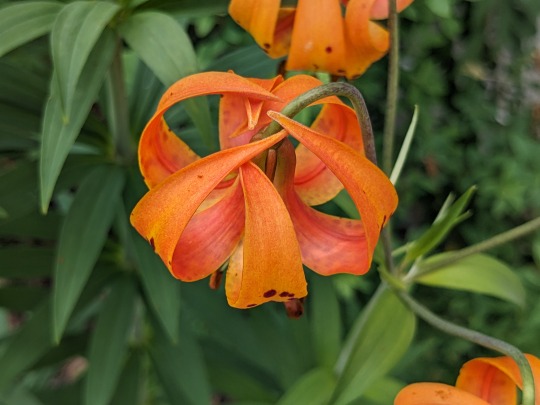
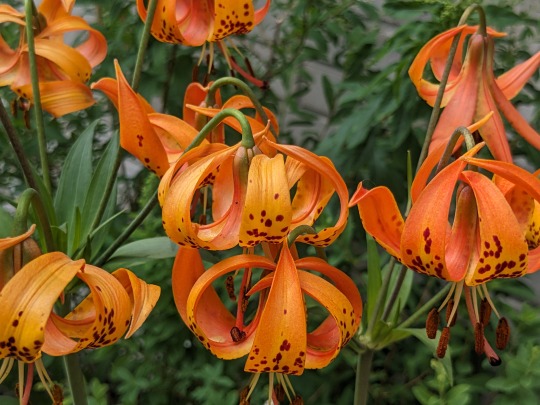

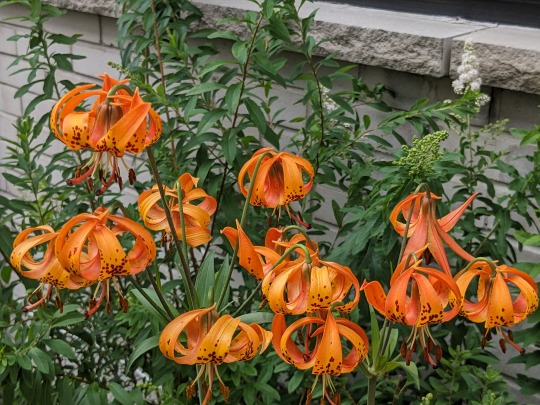

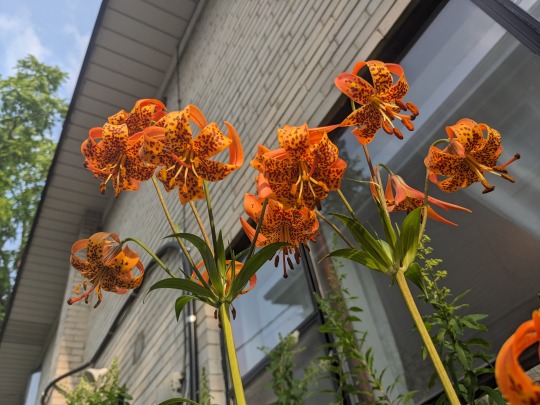



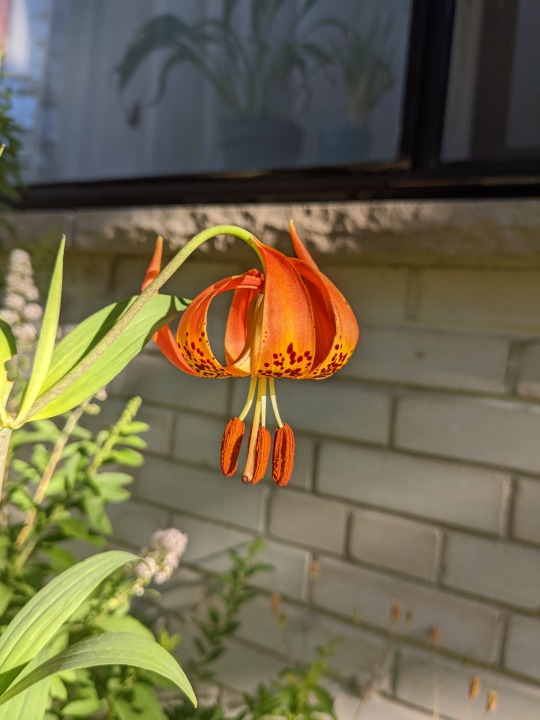

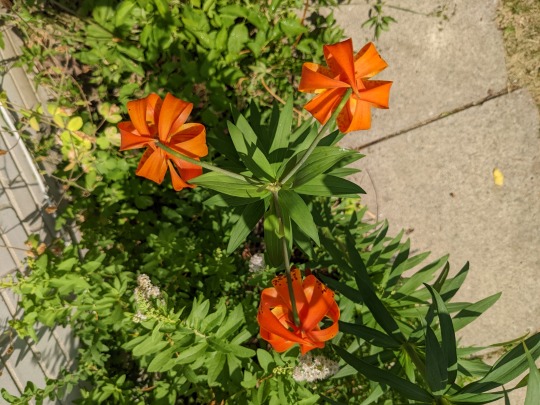
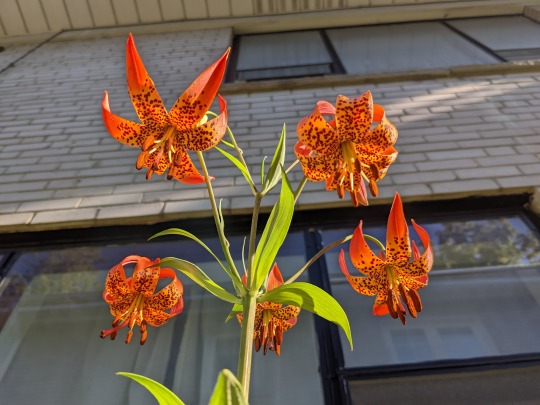

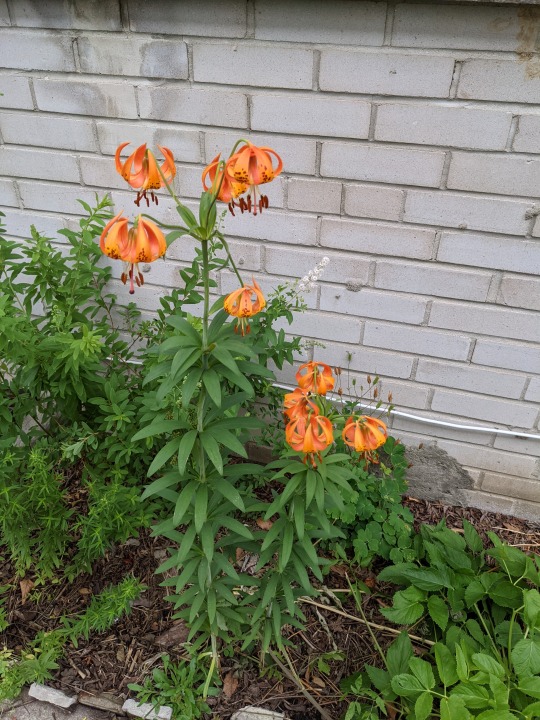
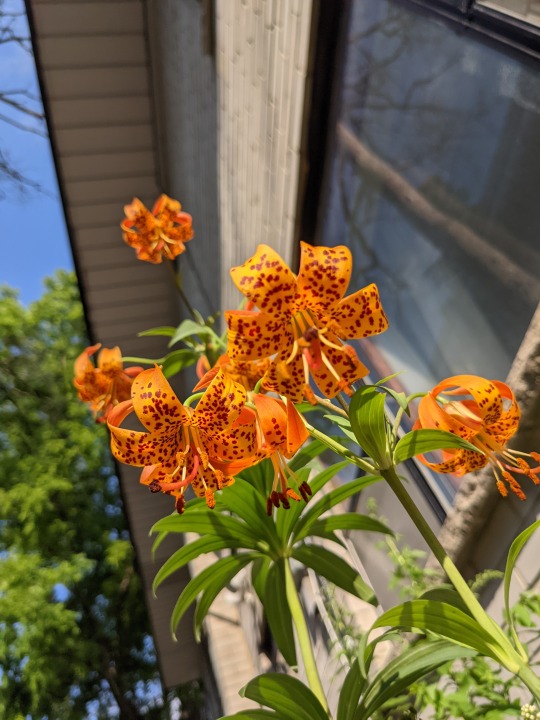
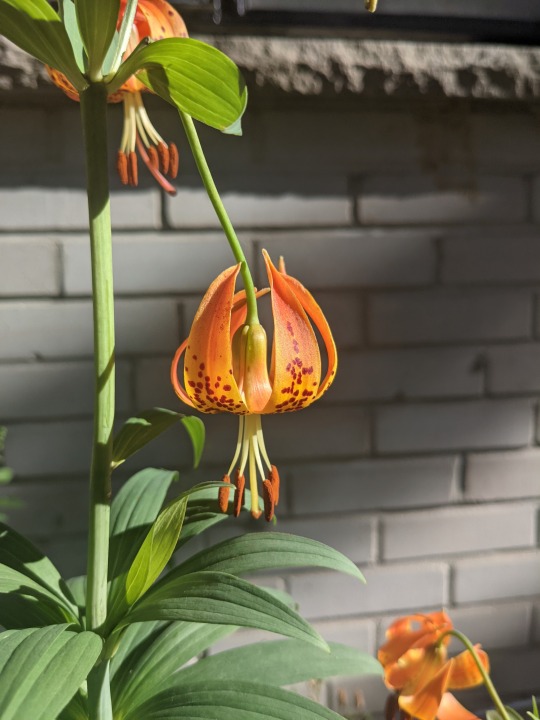



They bloom in June and spread slowly but exponentially. Flower petals and bulbs are edible cooked (all parts are toxic to cats and dogs though). :)
#photography#my photos#blackswallowtailbutterfly#Michigan lily#Lilium michiganensis#flowers#lilies#true lilies#orange flowers#wildflowers#gardening#native species#North American native plants#edible wild plants#my garden#native plants of Ontario and the northeastern USA
8 notes
·
View notes
Text


Papilio glaucus
Papilio glaucus, the eastern tiger swallowtail, is a species of butterfly native to eastern North America. It is one of the most familiar butterflies in the eastern United States, ranging north to southern Ontario, Canada, and is common in many different habitats.
22 notes
·
View notes
Text

Squirrel Corn (Dicentra canadensis) is another spring ephemeral native to the Great Lakes! This lovely specimen was photographed just south of Georgian Bay in Ontario.
These little guys look a LOT more like the traditional Bleeding Heart than their close (both species-wise and location-wise) relative Dutchman's Breeches. They don't get their name from any part of the flower however, and instead are named for their bulbs, which are yellow and divided. They roughly look like kernels of corn and, if you are familliar with squirrels and their taste for tulips, are an easy snack for small forest mammals.
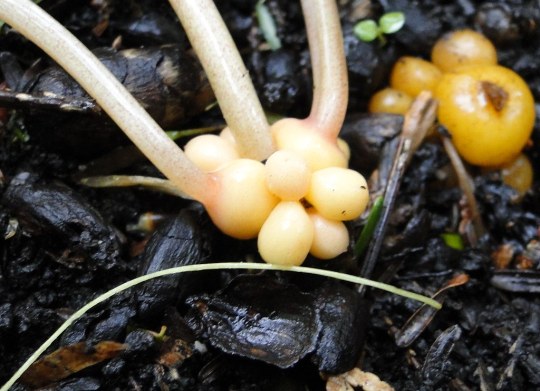
#submission#squirrel corn#dicentra canadensis#very cool!#I'm more familiar with the PNW bleeding heart and dutchman's breeches
42 notes
·
View notes
Text
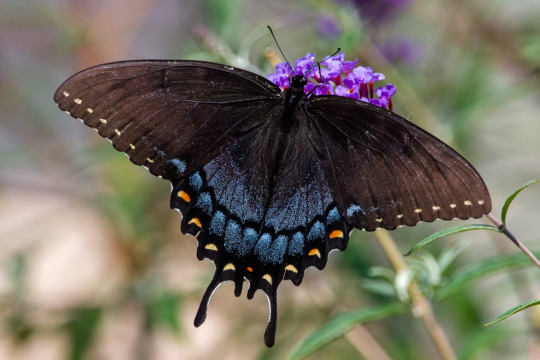

Eastern Tiger Swallowtail - Backyard, Cordova, Tennessee, USA
Joshua J. Cotten
Scientific name: Papilio glaucus
Family: Papilionidae
Class: Insecta
Order:��Lepidoptera
Average size: 3.12 to 5.5 inches ufl.edu
Domain: Eukaryota
Genus: Papilio
Papilio glaucus, the eastern tiger swallowtail, is a species of butterfly native to eastern North America. It is one of the most familiar butterflies in the eastern United States, ranging north to southern Ontario, Canada, and is common in many different habitats.
#Backyard#Cordova#Tennessee#USA#US#Wildlife#TNWildlife#United States#United States of America#North America#Butterfly#Butterflies#Papilio glaucus#Papilionidae#Insecta#Lepidoptera#Eukaryota#Papilio
5 notes
·
View notes
Text
found this native species of ontario card set in one of those free library things! its pretty neat it even has some triva questions. perfect for my ontario girl summer






5 notes
·
View notes